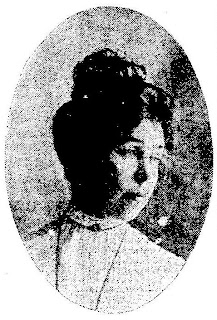More nuggets from the Portland
At an April 14 meeting of pure food activists working for market inspection in Portland Dr. Woods Hutchinson, who had recently resigned as secretary and health officer from the Oregon State Board of Health, “happened in.” He got cheers from the crowd when he confessed that he had changed his mind about women and civic power: “while I have never favored women’s suffrage,” he said, “when I see a movement of this kind I confess that I wish the women had the power of the ballot as well as the power of public opinion.” And, referring to the Portland
The assembly decided to “‘stick to the fight’ until it was won” and “the suggestion was here made that one of the deputies of the inspector [they still hoped for a large staff] be a woman. This was moved and carried unanimously.”
The Portland market inspection campaign apparently transformed Hutchinson Hutchinson
British-born Woods Hutchinson (1862-1930) received his medical degree from the University of Michigan Medical Department in 1884, taught anatomy at the University of Iowa from 1891-1896 and pathology at the University of Buffalo from 1896-1900 before coming to Portland, where he served as the secretary of the newly established state health board and state health officer from 1903 until 1905. He left Portland
And it appears that his brief association with the market inspection campaign in Portland
See:
“Women in Earnest,” Oregon Journal, April 14, 1905, 1, 8 (quotes and image from 8)
Herman W. Knox, ed. Who’s Who in New York 7th ed. (New York: Who’s Who, 1917), s.v. Hutchinson
“Dr. Woods Hutchinson,” New York Times, April 27, 1930, 29.













